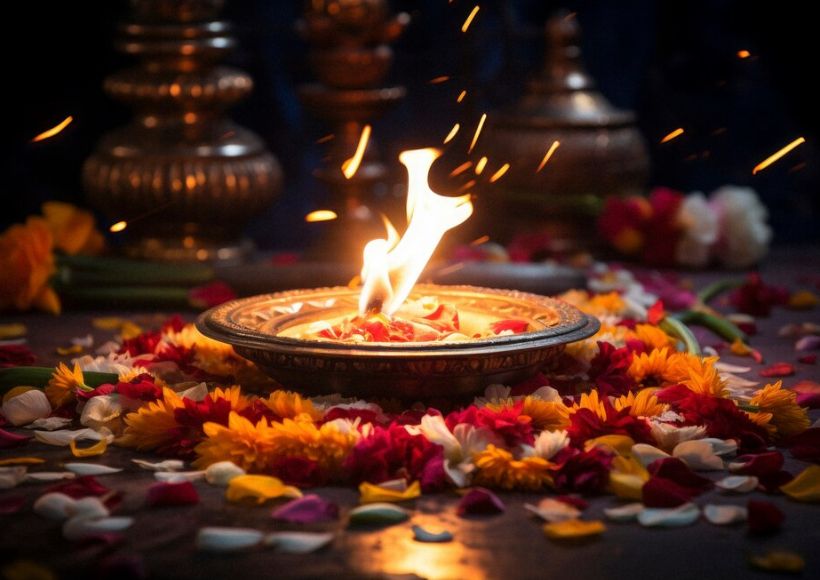The Significance of Culinary Rituals in Preserving Culinary Heritage
In a rapidly changing world, where culinary trends come and go, there’s something timeless about the rituals that surround food. From the preparation of a family recipe passed down through generations to the communal gathering around the dinner table, culinary rituals play a significant role in preserving culinary heritage. In this blog, we’ll delve into the significance of these rituals and how they help safeguard the rich tapestry of culinary traditions.
The Essence of Culinary Rituals:
Culinary rituals are the heartbeat of culinary heritage, serving as sacred practices that bridge the past with the present and connect individuals to their cultural roots. These rituals encompass a rich tapestry of traditions, customs, and practices that imbue the act of cooking and eating with deeper meaning and significance. At their core, culinary rituals are expressions of identity, memory, and belonging, shaping the way communities interact with food and each other.
Cultural Identity: Culinary rituals are a reflection of cultural identity, embodying the unique customs, beliefs, and values of a particular community or society. From the ceremonial preparation of traditional dishes to the observance of specific food-related festivals, these rituals serve as tangible expressions of cultural heritage, passed down from generation to generation. Whether it’s the intricate tea ceremonies of Japan or the elaborate feasts of India, culinary rituals offer a window into the soul of a culture, providing insights into its history, philosophy, and worldview.
Sense of Continuity: Culinary rituals provide a sense of continuity and stability in an ever-changing world, serving as anchors that ground individuals in their cultural heritage. Through the practice of time-honored cooking techniques, recipes, and mealtime customs, individuals reaffirm their connection to the past and preserve the legacy of their ancestors. Culinary rituals create a sense of familiarity and comfort, fostering a deep-seated bond between individuals and their culinary traditions.
Family and Community Bonds: Culinary rituals play a pivotal role in strengthening family and community bonds, bringing people together in shared acts of cooking, eating, and celebration. Whether it’s the weekly family dinner or the annual harvest festival, these rituals create opportunities for socializing, sharing, and connecting with loved ones. Through the act of preparing and sharing food, individuals forge meaningful relationships, build trust, and create lasting memories that transcend time and space.
Spiritual and Symbolic Significance: Culinary rituals often carry spiritual and symbolic significance, imbuing everyday acts of cooking and eating with deeper meaning and purpose. From the symbolic offerings made during religious ceremonies to the ritualized sharing of meals as expressions of hospitality and goodwill, food rituals serve as conduits for spiritual connection, social cohesion, and communal harmony. Through these rituals, individuals honor the divine, express gratitude for the abundance of nature, and affirm their interconnectedness with the world around them.
Celebration of Diversity: Culinary rituals celebrate the diversity of human experience, showcasing the myriad ways in which different cultures express themselves through food. From the rich culinary traditions of Europe to the vibrant street food culture of Southeast Asia, each tradition brings its own unique flavors, techniques, and rituals to the table. By embracing and preserving these diverse culinary practices, individuals not only honor their own cultural heritage but also cultivate a spirit of openness, curiosity, and appreciation for the culinary traditions of others.
Culinary rituals are a testament to the enduring power of tradition, connection, and community. They serve as reminders of our shared humanity, offering moments of joy, nourishment, and belonging in a world that is often fragmented and disconnected. By savoring these rituals, we honor the past, celebrate the present, and lay the foundation for a more harmonious and interconnected future.
Preserving Cultural Identity:
Preserving cultural identity is at the heart of culinary rituals, as these practices serve as powerful expressions of a community’s values, traditions, and worldview. Culinary rituals embody the essence of a culture, offering a tangible link to the past and a roadmap for the future. Here are some key aspects of how culinary rituals contribute to preserving cultural identity:
Transmission of Traditions: Culinary rituals play a vital role in transmitting cultural traditions from one generation to the next. Through the act of cooking traditional dishes, following time-honored recipes, and observing mealtime customs, individuals pass down valuable knowledge, skills, and stories that reflect their cultural heritage. This transmission of traditions ensures that the legacy of ancestors lives on, providing a sense of continuity and connection to the past.
Cultural Expression: Culinary rituals serve as powerful forms of cultural expression, allowing individuals to showcase their unique customs, beliefs, and values through food. From the ingredients used in traditional dishes to the cooking techniques employed, every aspect of culinary rituals reflects the cultural identity of a community. Through these practices, individuals express pride in their heritage, assert their cultural distinctiveness, and foster a sense of belonging within their community.
Symbolism and Meaning: Culinary rituals are imbued with rich symbolism and meaning, serving as more than just practical actions but as profound expressions of cultural identity. Whether it’s the symbolic significance of certain foods in religious ceremonies or the ritualized sharing of meals as expressions of hospitality and solidarity, culinary rituals are laden with layers of cultural symbolism that reinforce a community’s values and beliefs. By participating in these rituals, individuals reaffirm their cultural identity and strengthen their sense of belonging to their community.
Cultural Resilience: Culinary rituals play a crucial role in preserving cultural resilience in the face of external pressures and influences. In a rapidly changing world, where globalization and modernization threaten to erode traditional practices, culinary rituals serve as bastions of cultural identity and resistance. By upholding these rituals, communities assert their cultural sovereignty, resist cultural homogenization, and assert their right to self-determination.
Interconnectedness: Culinary rituals highlight the interconnectedness of different cultures and societies, showcasing the ways in which diverse culinary traditions have evolved and intersected over time. Through the exchange of foodways, ingredients, and cooking techniques, culinary rituals foster cross-cultural dialogue, mutual respect, and appreciation for cultural diversity. By embracing the culinary traditions of others, individuals enrich their own cultural identity and contribute to the vibrant tapestry of global culinary heritage.
Preserving cultural identity through culinary rituals is essential for safeguarding the richness and diversity of human culture. By honoring and celebrating these rituals, individuals not only preserve their cultural heritage but also forge deeper connections with their community, their ancestors, and the wider world.
Passing Down Traditions:
Passing down traditions is a fundamental aspect of culinary rituals, as these practices are deeply rooted in the collective memory and shared experiences of a community. Through the act of passing down traditions, individuals ensure the continuity and preservation of cultural heritage for future generations. Here are some key aspects of how culinary rituals contribute to passing down traditions:
Inter-generational Transmission: Culinary rituals serve as a means of inter-generational transmission, allowing knowledge, skills, and traditions to be passed down from elders to younger generations. Through hands-on participation in cooking traditional dishes, observing mealtime customs, and learning about the cultural significance of different foods, children and young adults gain a deeper understanding of their cultural heritage and develop a sense of pride in their identity.
Oral Tradition: Many culinary traditions are preserved and transmitted through oral tradition, with recipes, cooking techniques, and food-related stories being passed down orally from one generation to the next. This oral tradition ensures that valuable cultural knowledge is preserved and disseminated within the community, even in the absence of written records or formal education. Through storytelling and shared experiences, elders impart wisdom and insights that enrich the cultural fabric of the community.
Hands-on Learning: Culinary rituals provide opportunities for hands-on learning and skill development, as individuals actively participate in the preparation and cooking of traditional dishes. From mastering intricate cooking techniques to understanding the seasonal rhythms of food production, younger generations learn valuable skills that are essential for preserving culinary traditions. Through apprenticeship and mentorship, elders pass down their knowledge and expertise to ensure the continuity of cultural practices.
Cultural Celebrations: Culinary rituals are often central to cultural celebrations and festive occasions, serving as opportunities for community members to come together, share stories, and celebrate their heritage. Whether it’s preparing special dishes for religious festivals, harvesting crops for seasonal celebrations, or hosting communal feasts for weddings and other life events, culinary rituals create lasting memories and strengthen bonds within the community. By actively participating in these celebrations, younger generations learn about the cultural significance of different foods and rituals and develop a sense of belonging to their cultural community.
Adaptation and Innovation: While culinary traditions are rooted in the past, they are also dynamic and adaptive, evolving over time to reflect changing tastes, lifestyles, and environmental conditions. As younger generations inherit and reinterpret culinary traditions, they bring fresh perspectives and innovative ideas to the table, infusing traditional practices with new vitality and creativity. Through experimentation and adaptation, culinary traditions remain relevant and resilient, ensuring their continued survival for generations to come.
In essence, passing down traditions through culinary rituals is essential for preserving cultural heritage and fostering a sense of continuity and belonging within the community. By actively engaging in these rituals, younger generations honor the wisdom of their ancestors and contribute to the ongoing evolution of cultural identity.
Fostering Connection and Community:
Culinary rituals have a remarkable ability to bring people together, fostering a sense of connection and community. Whether it’s the weekly potluck dinner with friends or the annual harvest festival, these rituals provide opportunities for socializing, sharing, and bonding over shared culinary experiences. In a society increasingly characterized by individualism and digital isolation, culinary rituals offer a much-needed antidote, reminding us of the joy and nourishment that comes from gathering around the table with loved ones.
Conclusion:
In a world where culinary trends come and go, culinary rituals stand as a testament to the enduring power of tradition, connection, and community. By savoring these rituals, we not only preserve our culinary heritage but also enrich our lives with meaning, purpose, and belonging. So, the next time you gather around the dinner table or prepare a family recipe, take a moment to savor the ritual and appreciate the profound significance it holds in preserving our shared culinary heritage.
We both love Food, and we love to explore topics related to Food. Join us in our discovery and participate with us.
One of the best book that we ever read on Preserving Culinary Heritage is from Gena Philibert-Ortega. It’s available on Amazon. Below is the heading as is picked up from the store:
Celebrate Your Family Recipes and Heritage
From Great-grandma’s apple pie to Mom’s secret-recipe stuffing, food is an important ingredient in every family’s history. This three-part keepsake recipe journal will help you celebrate your family recipes and record the precious memories those recipes hold for you–whether they’re hilarious anecdotes about a disastrous dish or tender reflections about time spent cooking with a loved one.


